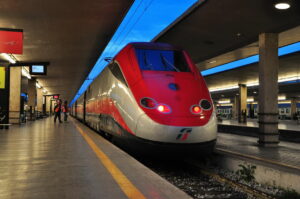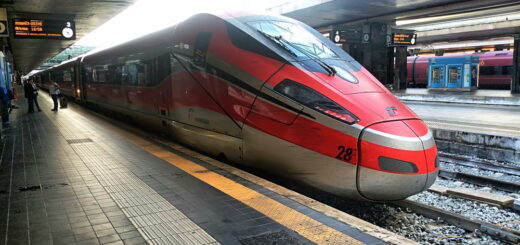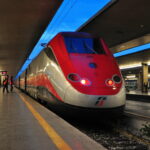From Italy to Europe, the train is the way to go
Domenico Scida, Director of the Trenitalia Intercity Business, talks about the projects of the Ferrovie dello Stato Italiane Group for international train services between Italy and Europe.
In 2023, more than 3 million passengers took a train to travel over the Italian border: a clear indication that Europeans prefer to choose sustainable transport. Thanks to Eurocity trains, European capitals are now just a stone’s throw away. It has never been easier to reach Switzerland: Berne, Basel, Geneva, Lausanne, Lucerne, Lugano, Zurich, Montreux. Every day, up to 40 Eurocity trains link Italy with the main Swiss cities. The services are run by Trenitalia in collaboration with the Swiss railways, SBB, and the German railways, DB.
 Eurocity trains are not the only international services: passengers using Euronight trains can leave the main Italian cities and reach their destination the following morning after a relaxing journey. The Euronight trains, which feature Nightjet coaches, are run by Trenitalia in cooperation with the Austrian railways ÖBB. Every evening, a train leaves from Rome/Ancona and a second from La Spezia bound for Vienna, Salzburg and Munich.
Eurocity trains are not the only international services: passengers using Euronight trains can leave the main Italian cities and reach their destination the following morning after a relaxing journey. The Euronight trains, which feature Nightjet coaches, are run by Trenitalia in cooperation with the Austrian railways ÖBB. Every evening, a train leaves from Rome/Ancona and a second from La Spezia bound for Vienna, Salzburg and Munich.
Domenico Scida, Director of the Trenitalia Intercity Business: EuroCity is the international arm of the InterCity service, a cross-border international arm with trains linking Italy to the neighbouring countries so that passengers can travel from Italy to the surrounding nations. Specifically, the daytime services provide links with Switzerland, while the night-time services go to Austria and Germany. It’s an important world because it clocked up more than 3 million passengers in 2023.
There are 40 daytime services with Switzerland, a significant number, with twenty pairs linking the main northern Italian cities – Milan, Venice, Bologna, Genoa – with the main Swiss cities – Basel, Geneva, Zurich, Berne. At night, we have services leaving in the evening from Rome, La Spezia and Genoa to reach Vienna and Munich the following morning.
The figures for 2023 reflect our success story with Switzerland. We have just closed an agreement with the Swiss railways to purchase an additional five new Giruno trains, which will go into operation on Italian routes as from the end of 2025. This is a significant boost to the service because it provides a tool for incoming tourism. Huge numbers of passengers – 3 million – largely non-Italians, chose the train to come to Italy, above all for a vacation.
Meanwhile, the Euronight night-time lines linking Italy with Austria and Germany – Vienna and Munich – will be using new coaches owned by OBB, the Austrian railways, starting in September. At the moment, the new coaches are being rolled out elsewhere in Europe, in September they will be used on Italian trains too. These carriages guarantee a better on-board experience, with extremely comfortable and welcoming passenger services, very low noise levels silence and on-board digitalisation in line with the latest advances in rail travel.
The train is a sustainable means of transport, the sustainable means for travel par excellence because it is electric and does not pollute. Moreover, it is a collective electric means. For example: a train leaving from Zurich and arriving in Milan just 3 hours and 17 minutes later, certainly a better time than a car, carries 500 people.
If those 500 people were to make the journey by car, let’s say an average of 2.3 people per vehicle in statistical terms, you would have 200 more cars on the road. So you can easily imagine the savings in carbon emissions, road stress and traffic. This means we have managed to transfer large numbers of people, of passengers, from the automobile to collective transport.
























